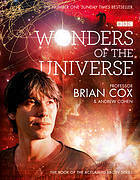
The Book of Universes: Exploring the Limits of the Cosmos
Book Description
What if our universe is just one of countless others, each with its own rules and possibilities? Journey through realms of mind-bending theories and astounding discoveries in "The Book of Universes," where John D. Barrow unveils the profound mysteries of cosmology. Each page ignites curiosity, challenging perceptions of reality and inviting readers to ponder the unimaginable. From the origins of existence to the tantalizing potential of multiverses, experience the thrill of cosmic exploration. As science collides with philosophy, one question lingers: What does it truly mean to be part of a universe among many?
Quick Book Summary
In "The Book of Universes," John D. Barrow takes readers on a fascinating exploration of cosmology, tracing humanity’s evolving understanding of the universe and its possible alternatives. The book surveys the historical development of cosmological models, from ancient philosophical speculations to contemporary theories grounded in physics. Barrow delves into the implications and inner workings of different universe models—including closed, open, flat, and those predicted by modern theories such as inflation and the multiverse. He skillfully intertwines scientific concepts with philosophical inquiries, prompting readers to question the very nature of existence and reality. By demystifying complex ideas with clarity and wit, Barrow illuminates the boundless possibilities that arise when contemplating universes beyond our own. Accessible yet profound, the book encourages reflection on our cosmic place and the ultimate nature of everything.
Summary of Key Ideas
Table of Contents
Historical Evolution of Cosmological Models
Barrow begins by charting the evolution of humanity’s thinking about the cosmos. He discusses how early civilizations viewed the universe as a static, finite entity, often shaped by myth and philosophical doctrine. With the advances of mathematics and observational astronomy, our view expanded rapidly, culminating in Einstein’s general relativity and the realization that space and time are dynamic entities. Barrow highlights how each groundbreaking model challenged and reshaped our perceptions, setting the stage for even more radical ideas about the cosmos.
The Structure and Fate of Universes
The book examines various models that cosmologists have proposed to describe the structure and possible fate of the universe. Barrow explains the differences between closed, open, and flat universes, translating complex mathematics into vivid metaphors. He explores the concept of cosmic inflation and how it addresses problems in standard cosmology. The fate of a universe—whether it will expand forever, eventually collapse, or reach a steady state—depends on fundamental physical parameters, which Barrow masterfully unpacks for the reader.
The Multiverse and Alternative Realities
Moving beyond our own cosmos, Barrow introduces the tantalizing idea of the multiverse—a landscape where countless universes exist, each governed by its own set of laws and constants. He discusses how theories in quantum mechanics, string theory, and inflation suggest real possibilities for parallel realities. The anthropic principle emerges as a tool for contemplating why our universe seems fine-tuned for life, leading to deeper questions about necessity, chance, and the scope of cosmic variation.
Philosophical Implications of Cosmology
Barrow weaves philosophical questions throughout his account, challenging readers to consider the meaning of existence and reality in a potentially infinite ensemble of universes. He addresses timeless issues such as the nature of infinity, the limits of scientific explanation, and the boundary between science and philosophy. The possibility of multiple, radically different universes raises questions about determinism, purpose, and what it truly means to observe or inhabit a universe.
Limits and Future Directions in Understanding the Cosmos
The final sections reflect on the current frontiers and limitations of cosmological inquiry. Despite the triumphs of modern physics, Barrow emphasizes how much remains unknown. He discusses observational and theoretical challenges in distinguishing between different universe models and in detecting evidence for the multiverse. Barrow closes by contemplating the continuing evolution of cosmological thought and encourages readers to embrace curiosity and humility as we probe the cosmos’ ultimate mysteries.
Download This Summary
Get a free PDF of this summary instantly — no email required.




![The Whole Shebang: A State-of-the-Universe[s] Report cover](https://images-na.ssl-images-amazon.com/images/S/compressed.photo.goodreads.com/books/1347278841i/310330.jpg)
